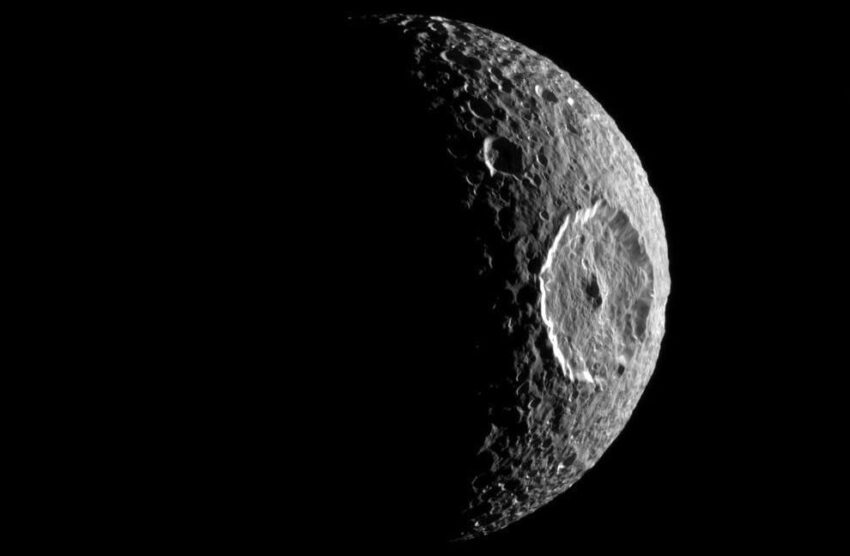
formation of oceans within icy moons could A recent study has unveiled that the formation of oceans within icy moons may lead to boiling waters beneath their frozen surfaces.
formation of oceans within icy moons could
Understanding Icy Moons in the Outer Solar System
The outer Solar System is home to a fascinating array of icy moons, each exhibiting unique geological features that suggest a complex and dynamic environment. Among these moons, Enceladus, a satellite of Saturn, has garnered significant attention due to its striking surface features, including active geysers that eject plumes of water vapor and ice particles into space. These geysers are strong indicators of the presence of subsurface oceans, which are believed to exist beneath the icy crust.
The existence of these oceans has been attributed to gravitational interactions between the moons and their parent planets, as well as other celestial bodies. These interactions create flexing and friction within the moon’s interior, generating enough heat to melt the ice and form liquid water. However, the dynamics of these interactions are more complex than previously understood, with implications that extend beyond the mere existence of liquid water.
Orbital Dynamics and Cyclical Interactions
One critical aspect that has received less attention in discussions about icy moons is the nature of their orbits. The gravitational interactions that lead to internal heating are not static; they can be temporary or cyclical. The orbits of celestial bodies are often irregular and can undergo long-term cycles that affect their gravitational relationships. This means that the internal oceans of these moons may not be a permanent feature. Instead, they could come and go as the moons undergo cycles of melting and refreezing.
This cyclical nature of orbital dynamics raises intriguing questions about the stability of the subsurface oceans. If the gravitational interactions are not consistent, the amount of heat generated within the moon can vary significantly over time. Consequently, the internal oceans may experience periods of existence followed by phases where they freeze solid again. This fluctuation could have profound implications for the geological and potentially biological processes occurring within these moons.
New Insights from Recent Research
A new study published in Nature Astronomy provides fresh insights into the consequences of these cyclical interactions. The research focuses on the difference in density between liquid water and ice, which is approximately 10 percent. This difference in density has significant implications for the internal structure of icy moons as they undergo melting.
As the ice melts and transforms into liquid water, the overall volume of the moon may decrease. This reduction can create an area of low pressure just beneath the icy shell. If the moon is sufficiently small, this low-pressure zone could lead to a phenomenon where the surface of the ocean begins to boil. The boiling of water in such an environment is a consequence of the unique physical conditions present within these moons.
The Mechanism of Boiling
The boiling of water typically occurs when the temperature reaches a certain threshold, causing the liquid to transition into vapor. However, in the context of icy moons, the boiling point of water can be influenced by the pressure exerted upon it. In a low-pressure environment, water can boil at lower temperatures than it would under normal atmospheric conditions. This means that even if the temperature of the subsurface ocean is not exceedingly high, the reduced pressure could facilitate boiling.
This phenomenon has significant implications for our understanding of the geological processes occurring within these moons. If the oceans are indeed boiling, it could lead to the formation of gas bubbles, which may rise to the surface and contribute to the observed geysers. The presence of boiling water could also influence the chemical composition of the ocean, potentially affecting any microbial life that may exist within these environments.
Implications for Astrobiology
The potential for boiling oceans beneath the icy surfaces of moons like Enceladus and Europa raises intriguing questions about the possibility of life beyond Earth. The conditions that allow for liquid water to exist are considered one of the key prerequisites for life as we know it. If these moons have active subsurface oceans that experience boiling, it could create a dynamic environment rich in nutrients and energy sources.
Astrobiologists are particularly interested in the potential for extremophiles—organisms that thrive in extreme conditions—to inhabit these boiling oceans. The unique conditions created by boiling water could lead to the development of ecosystems that are vastly different from those found on Earth. Understanding these potential ecosystems is crucial for guiding future exploration missions to these icy moons.
Future Exploration and Research
The findings from the recent study underscore the importance of continued exploration of icy moons in the outer Solar System. Missions such as NASA’s Europa Clipper and the European Space Agency’s Jupiter Icy Moons Explorer (JUICE) are poised to investigate the subsurface oceans of Europa and Ganymede, respectively. These missions aim to gather data on the composition, geology, and potential habitability of these moons.
In addition to these missions, advancements in technology and remote sensing capabilities will play a critical role in understanding the dynamics of icy moons. Future research should focus on developing models that simulate the thermal and geological processes occurring within these moons, taking into account the cyclical nature of their orbits and the implications for subsurface ocean stability.
Stakeholder Reactions and Broader Context
The scientific community has responded positively to the findings of the recent study, recognizing its potential to reshape our understanding of icy moons and their geological processes. Researchers have emphasized the need for interdisciplinary collaboration to explore the implications of boiling oceans and their potential impact on astrobiology.
Moreover, the study highlights the importance of continued investment in space exploration. As our understanding of the outer Solar System deepens, the potential for discovering extraterrestrial life becomes increasingly plausible. This prospect has significant implications for humanity’s understanding of its place in the universe and the potential for life beyond Earth.
Conclusion
The formation of oceans within icy moons presents a complex interplay of geological and astrobiological factors. The recent study published in Nature Astronomy sheds light on the potential for boiling waters beneath the icy surfaces of these moons, raising important questions about their stability and the implications for life. As exploration efforts continue, the mysteries of these distant worlds may soon be unveiled, offering new insights into the nature of our Solar System and the potential for life beyond our planet.
Source: Original report
Was this helpful?
Last Modified: November 25, 2025 at 6:36 pm
2 views















